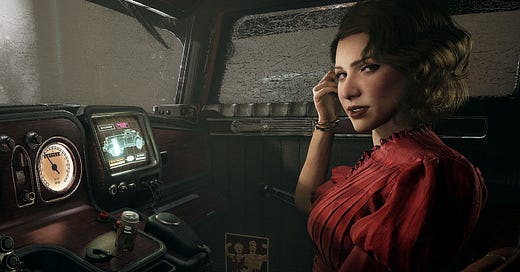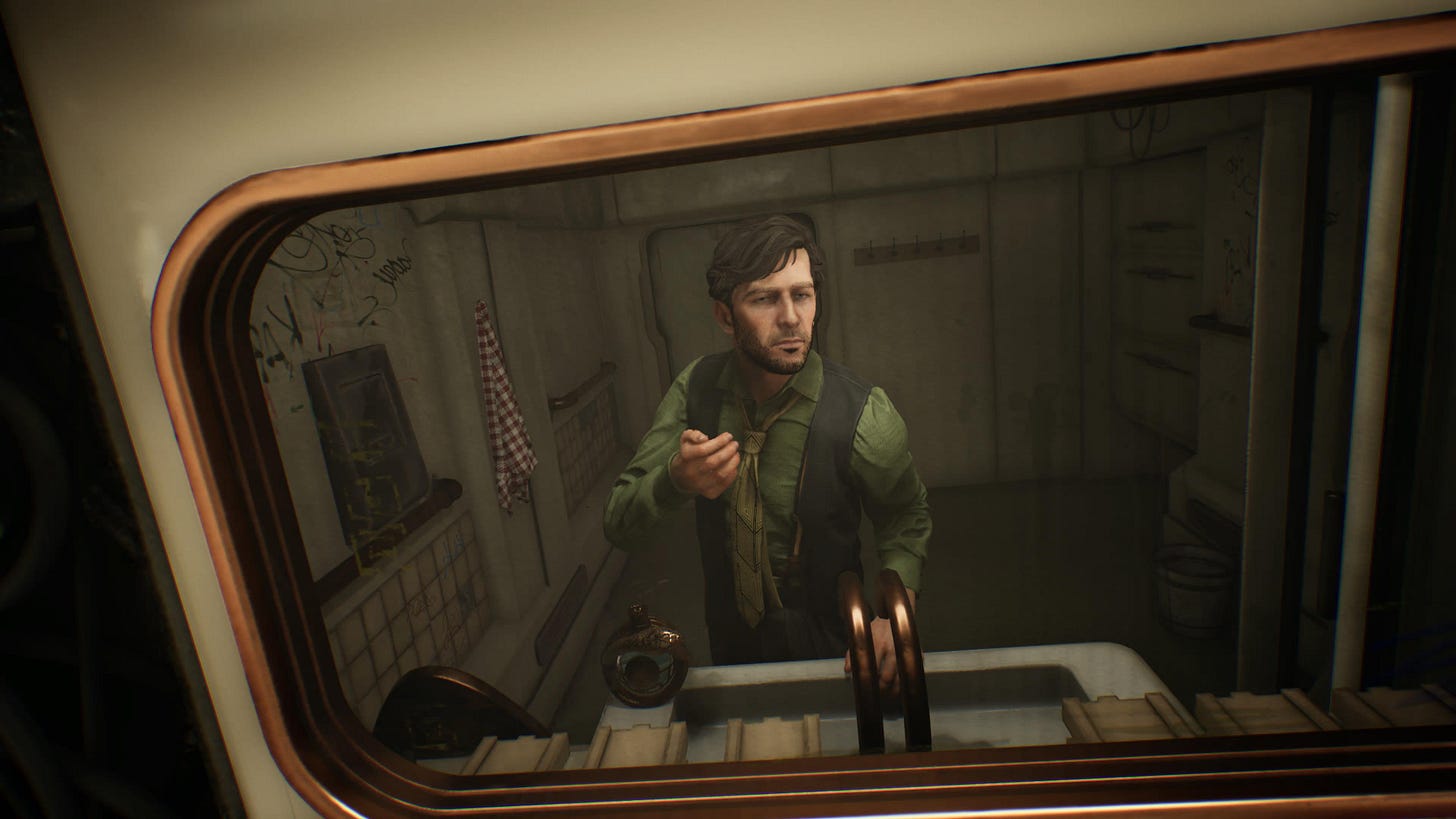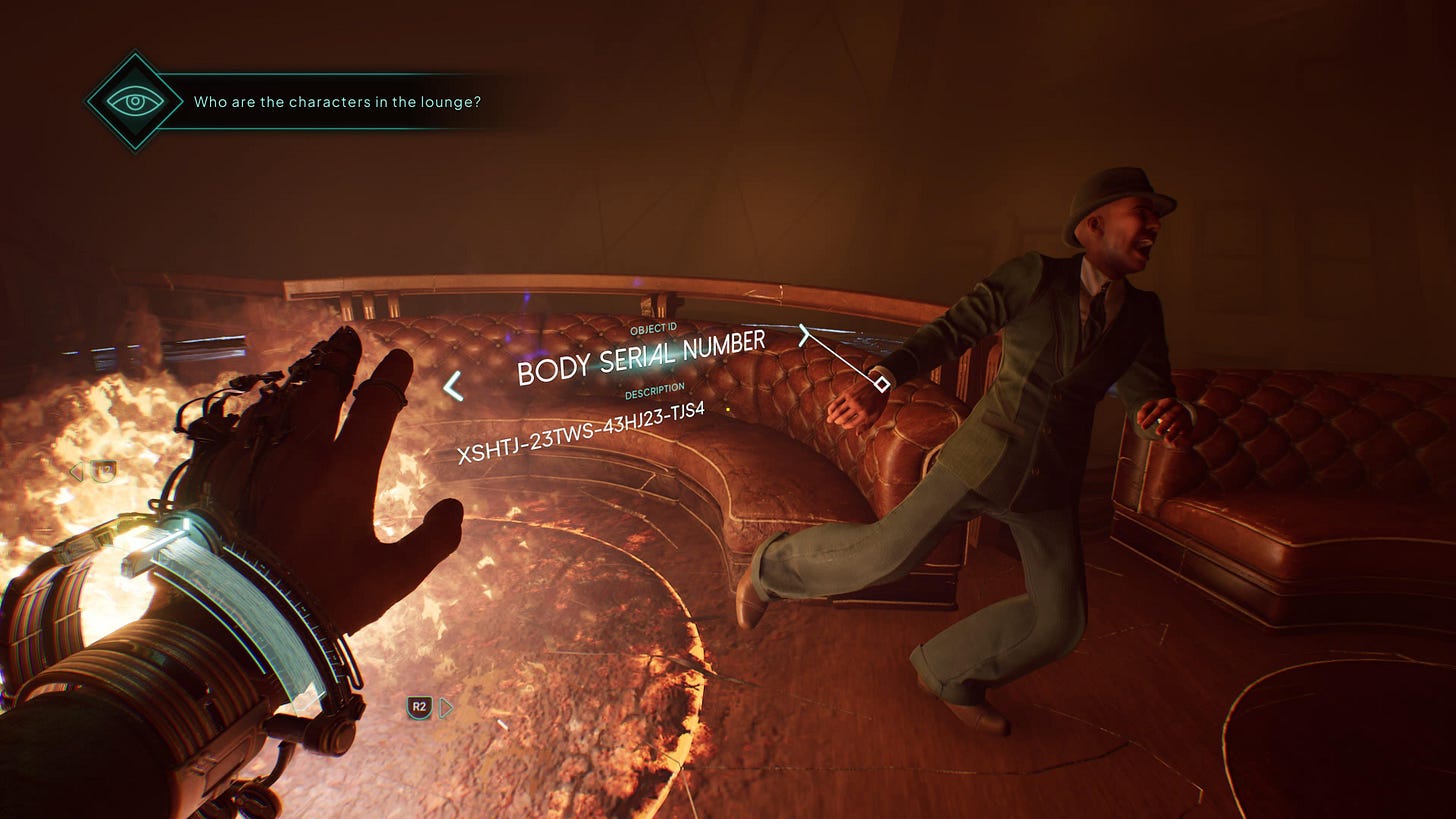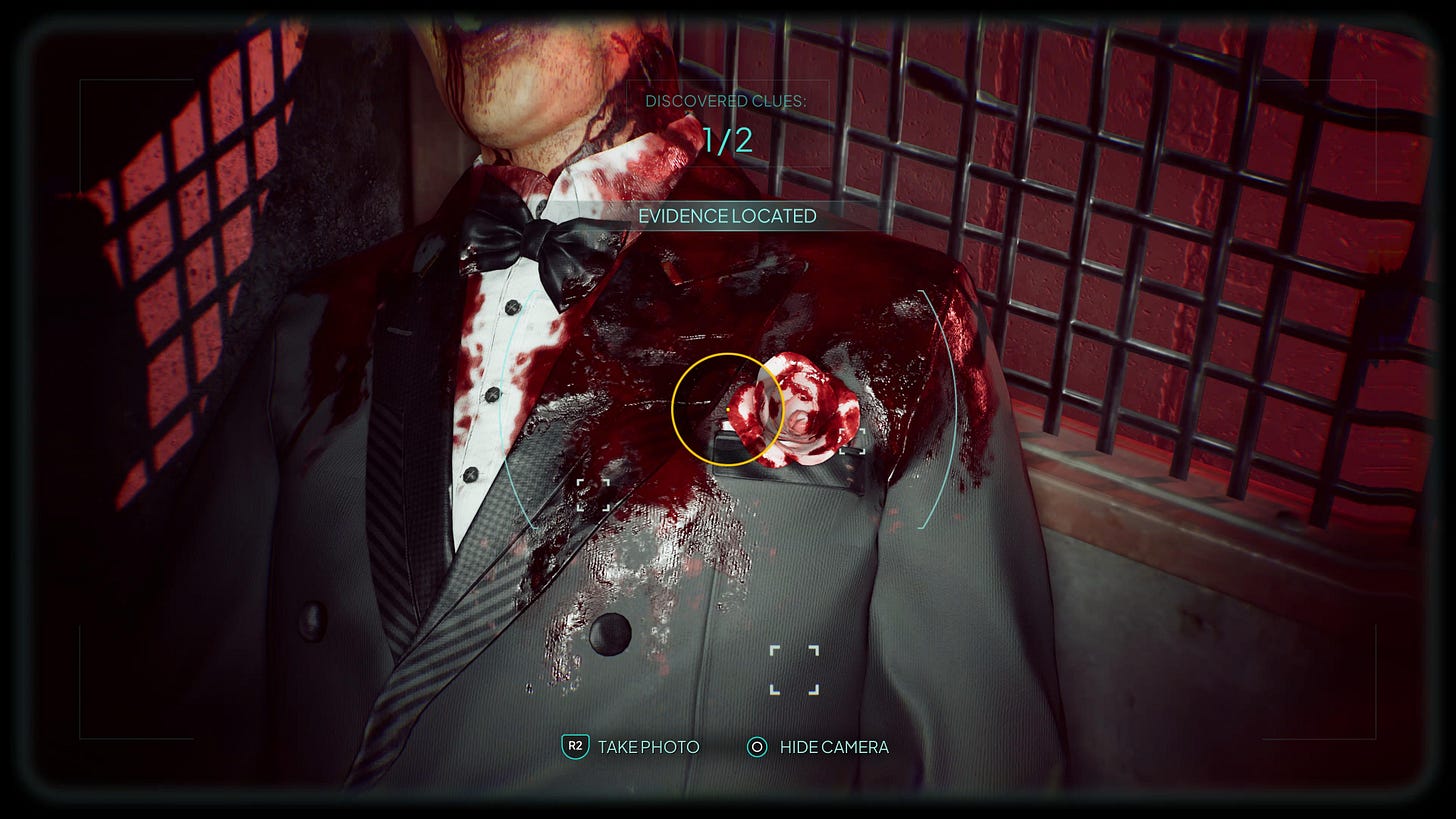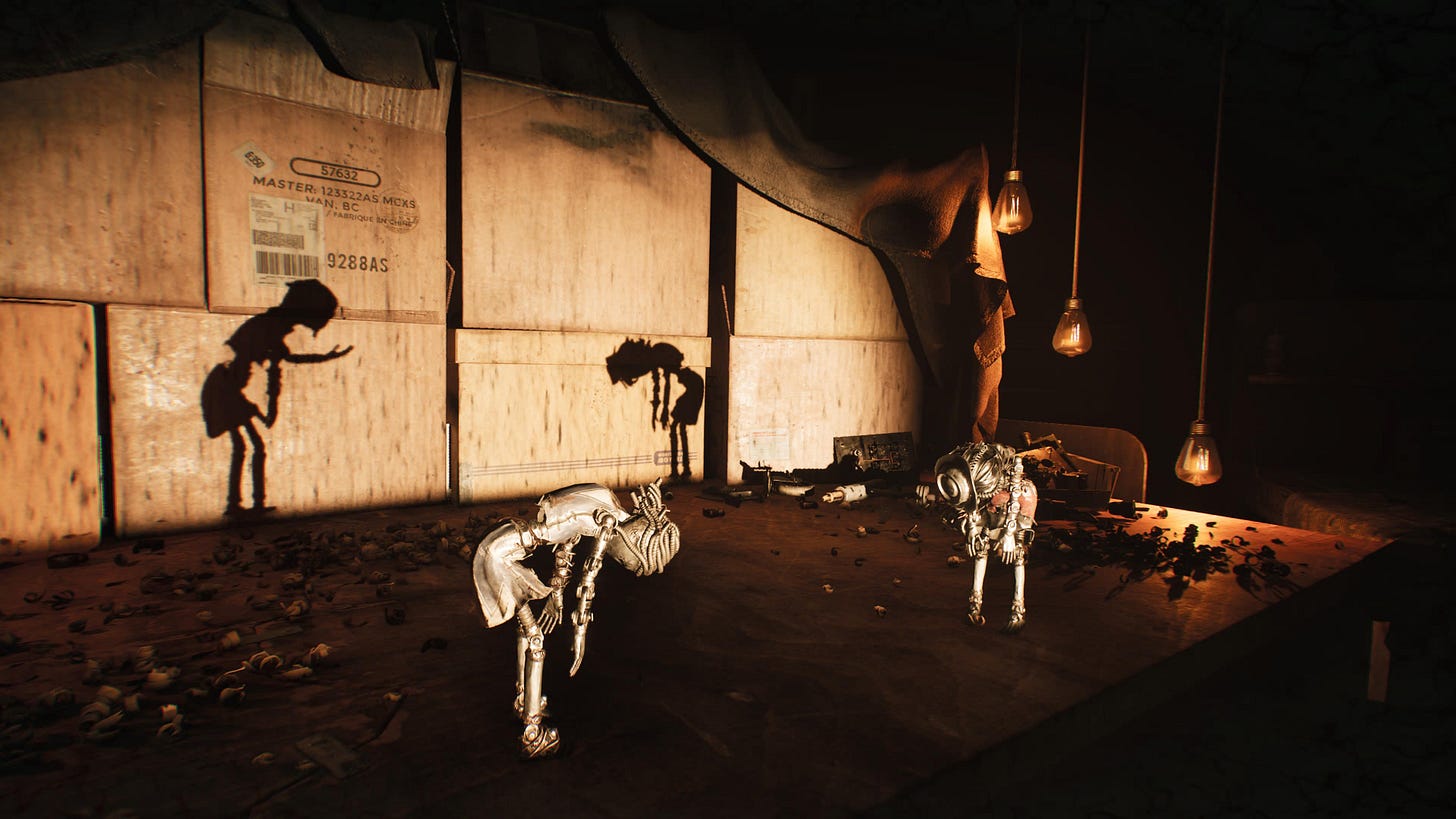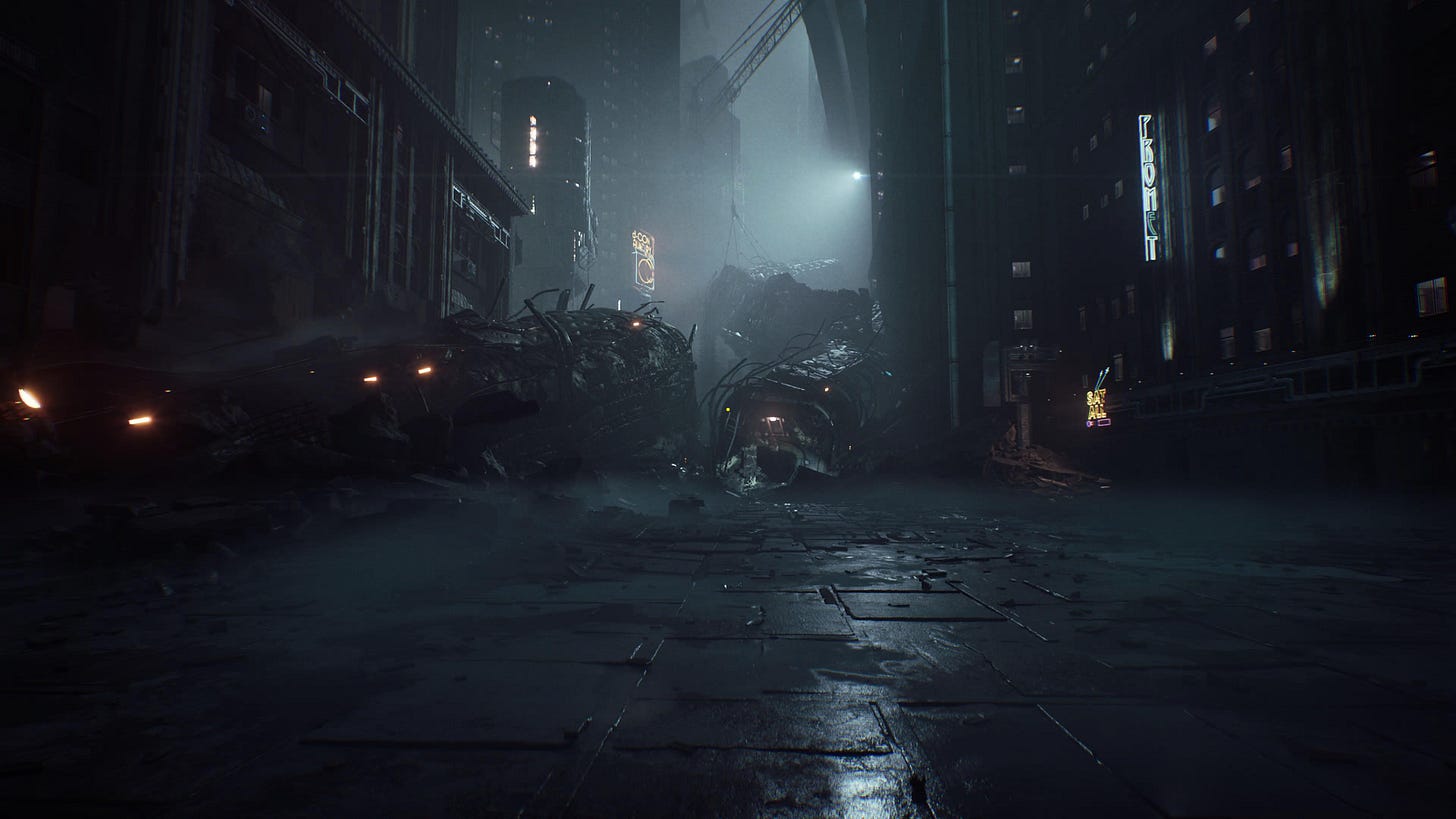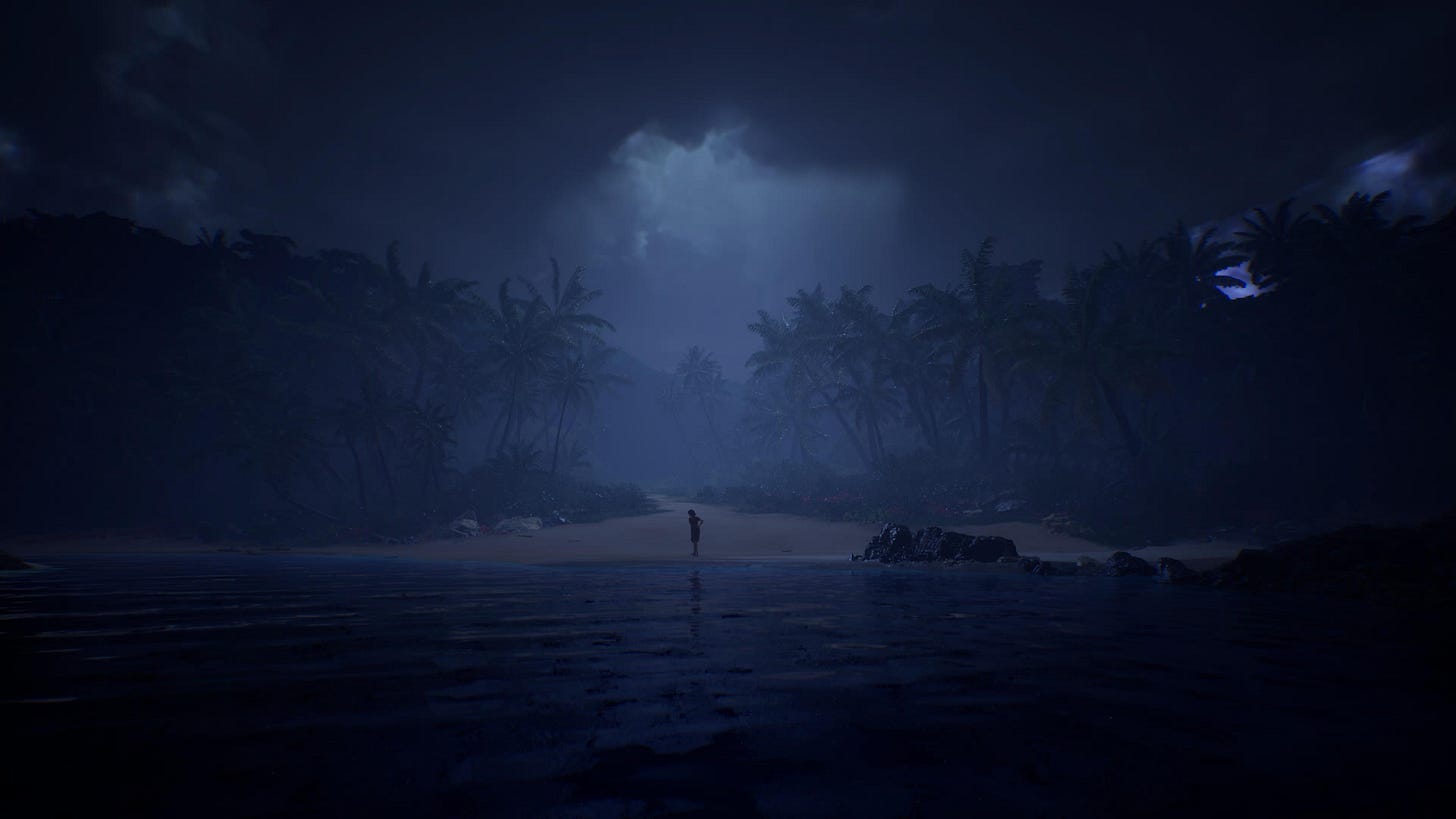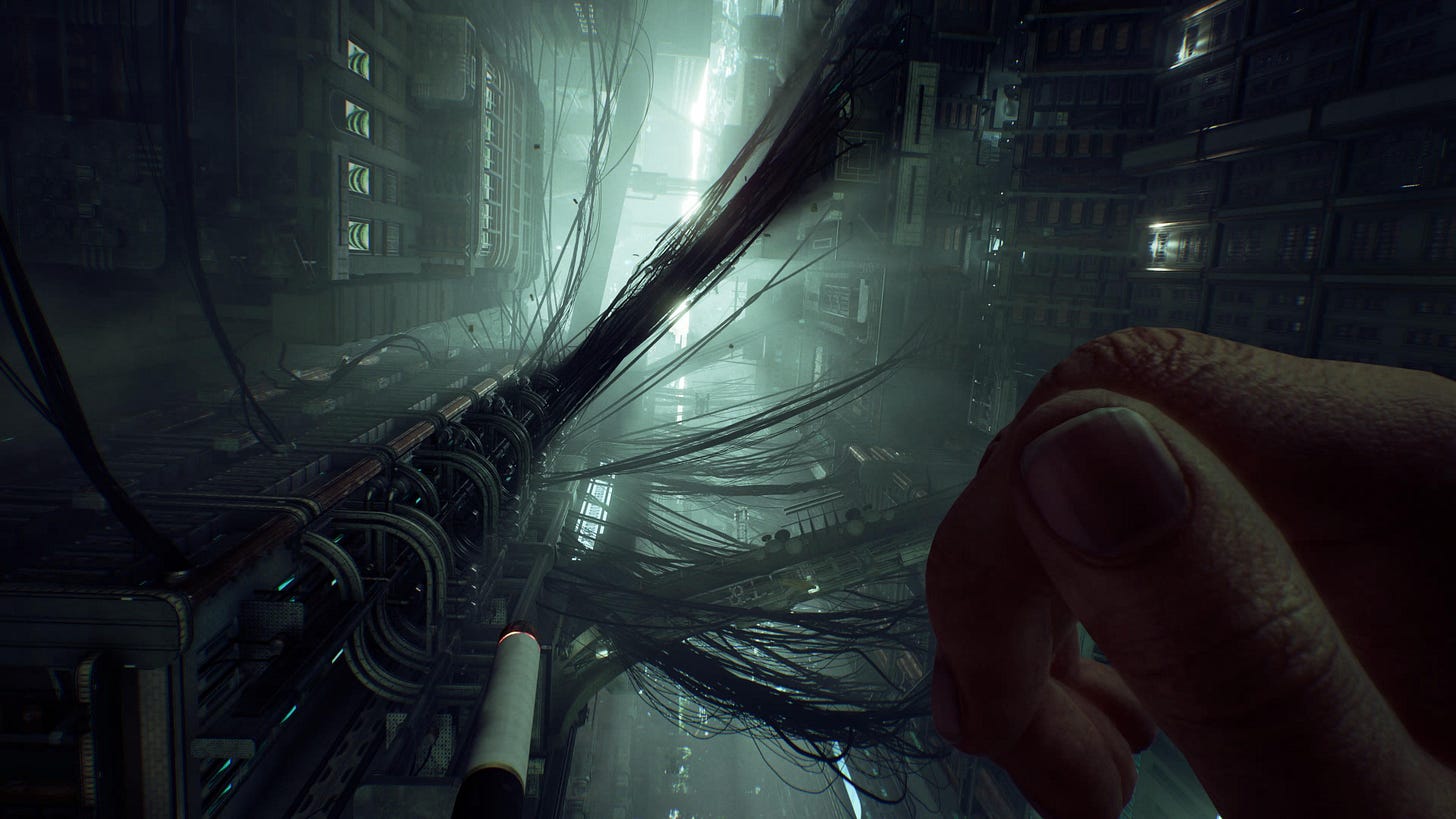Nobody Wants to Die is what walking sims aspire to be
Critical Hit Games' latest is a gripping noir tale that relies on solid fundamentals and excellent writing
Review: Nobody Wants to Die
Developed by Critical Hit Games and published by Plaion
Rating: ★★★★★★★★☆☆
Every detective noir — ranging from such films as The Maltese Falcon, The Lady From Shanghai and Touch of Evil to games like The Wolf Among Us, Chicken Police - Paint it RED! and LA Noire — worth its salt begins with that one case. It may or may not be brought by a “dame who wasn’t worth the trouble”, but it sets the tone for the entire story. Very often, these cases are either just the tip of the iceberg, red herrings or completely unrelated to the story at large. However, it’s here that the film/show/book/game sinks its teeth into you and captures your attention. Or doesn’t.
Nobody Wants to Die by Poland’s Critical Hit Games finds itself sitting rather pretty in the former category, because it wholeheartedly embraces the concept of the first case. Well, my understanding of the concept anyway. Even in non-interactive media, I’ve always viewed it as a tutorial of sorts for viewers/readers, whereby they can familiarise themselves with the protagonist (usually a police officer, private investigator or vigilante), their ways, a bit of their baggage and a whole lot of their vices. Quite ironically, the least important case in the narrative may well prove to be the most critical in terms of drawing the audience in. And that’s a lot like a good tutorial. We’ll revisit this shortly, however, there’s a very important question that we need to answer first.
‘How did I wind up with a faceful of tile?’
I’d been tracking Nobody Wants to Die for a few weeks with a keen eye on the launch date. And on July 17, I swiftly set about procuring the game as soon as it launched. I’d recently played Still Wakes the Deep — also in the ballpark of walking simulators that look gorgeous — and wanted a bit more of the same. Admittedly, The Chinese Room’s most recent offering entailed a bit more than mere walking: You had to jump across gaps, partake in stealth, run away from monsters and test your reflexes with some quick time events (QTE). Together, they lent a sense of survival to proceedings, but at its heart, it was still a walking simulator.
That term is thrown around rather derogatorily in the wake of Death Stranding, but it really shouldn’t, because Death Stranding is very much an action-adventure title. Walking simulators are cut from a different cloth. Instead of necessarily having you influence your surroundings or those occupying them, this variety of game seeks to immerse you in a world whose minutiae you are free to observe, examine and interact with to some extent. And within that matrix does the game’s entire narrative live and breathe. But, I digress; we were discussing the tiles and why I was left facedown in them.
Between nine and 10 hours before I started putting fingertips to keyboard, I embarked on a journey as James Karra. That’s him in the image above. Not a particularly conspicuous-looking guy, but he carries massive baggage with him — the weight of his own past. Or maybe that should be pasts. Nobody Wants to Die is set in a New York City around 300 to 400 years in the future, you see. And in that time frame, death isn’t permanent. Your consciousness is simply transferred to a different body — a new shell, if you will. Of course, not everything is as simple as that: This is a luxury available only to the wealthy, since there’s a subscription to be paid for this service. For those who can’t, their consciousness is transferred to a massive repository of memories.
When we walk into his life, James is on his fourth body and still trying to make sense of the events that led to him having to leave his third and be kicked off the police force temporarily. Amidst all of this is a death that needs to be investigated,… or not, if the police chief is to be believed. This then is that first case to which I had alluded at the very top, and it serves its purpose marvellously. As I approached it, I was aware that this mission was likely going to lead nowhere, but that I’d get a sense of the gameplay mechanics on offer and the sort of dialogue options I could expect going forward. I’m pleased to report I was right on the second count and dead wrong on the first. And that’s because this first case is the first of many layers you’d need to peel to get to the heart of Nobody Wants to Die.
‘You wanna know who I am, kiddo? Yeah, sometimes so do I’
Crafted with Unreal Engine 5, the game looks fantastic and wears its influences proudly on its sleeve. Piled over the detective noir underpinnings of the piece are elements of dystopia, cyberpunk, horror and a bit of sci-fi. On my part, I got some distinct Blade Runner, Dark City, Altered Carbon, Minority Report, Ghost in the Shell, a bunch of films about dirty cops and Cyberpunk 2077 vibes. Oh, I also had the fleeting impression that a sprinkling of Bioshock Infinite had made its way in as well. Notably, none of these hat tips appeared to exist for cosmetic value alone; I felt that they contributed in a substantial way to building either lore, gameplay, characters or story arcs.
We’ve established at this point that it’s a walking simulator and you’ve presumably watched the trailer already, so just what does one do in Nobody Wants to Die besides walk? Since you play a suspended police detective, the first part of the answer is that you do a fair bit of detection. This includes traditional stuff like looking around for clues, scanning for conspicuous fluids with a UV light and checking the insides of stuff with an X-ray machine, as well as more advanced stuff like reconstructing crime scenes using memory traces and moving time backwards and forwards.
Turning time back and forth is a large part of the detective work, so it’s a good thing I quite enjoyed it. At times, it felt like a significant chunk of the detection section of Cyberpunk 2077 had been carved out and given life as a game of its own. Aside from being a great exhibition of what Unreal Engine 5 can do, the detective sections are immersive and do a great job of world-building and storytelling. For instance, there’s a bit roughly a quarter into the game where James is investigating the gutted remains of a nightclub. Watching flames erupt in slow motion as part of the reconstruction, and then disappear back from whence they came is a lot of fun, no doubt.
But it’s what you learn about the variety of customers there by reconstructing their respective demises that is most interesting. Pulling the scene back to seconds before the explosion will show you that a certain well-dressed guy had a suitcase bearing fingerprints that weren’t his own. And off you go down that rabbit hole until before long, you’re examining bullet trajectories, poring over bloody reconstructed corpses, scanning for traces of explosives and trying to deduce why these very people were at that venue at that very time.
All of this is in service of the second key gameplay mechanic in Nobody Wants to Die: The evidence board. Once you return from the crime scene to the hovel you call home, it’s time to make sense of all the information and learnings you’ve gleaned. The way this plays out is in the form of a grid on the floor with a query at the top and on the side, a whole bunch of statuettes representing each piece of evidence. Your job is to place the right bit of evidence on the relevant question (or vice versa) and in doing so, unlock new ones until you can finally conclude your analysis. A successfully concluded analysis leads you to the next part of the story, while an unsuccessful one means you have to do some more trial and error, and try out different clues. This felt a bit clunky and unintuitive, and at times, seemed to reduce all my earlier detection to mere busywork.
And finally, there’s the third mechanic, which is the least complicated from a gameplay perspective but the most challenging from a mental standpoint, and that is choice. The variety of dialogue options and actions at pivotal moments isn’t particularly vast, but they can be quite weighty — extremely the latter. So as not to spoil anything, I won’t go into these examples in any detail, but there’s an action option early on and one roughly midway through the game that underlines this notion. The first one seems innocuous enough, but given the role you are playing in this game, you know it could be an influential decision. The second seems loaded with consequence right off the bat, but your quandary stems from attempting to extrapolate what sort of ending you’d like to see.
While I enjoyed the somewhat shape-shifting nature of gameplay (from point and click to logical puzzle to visual novel, and back), I was mildly put off by the extent of handholding in most parts of the game. I did check, but there was no option to turn off the massive indicators that signal your next point of interest. I certainly believe the game would’ve been a shade more frustrating without these, however, that challenge would’ve made getting to the bottom of confounding situations a lot more rewarding. Similarly, with the evidence board, I would’ve enjoyed a fail state wherein an oversight in collecting crucial information could result in a premature ‘game over’ screen. It would’ve pushed me to be that much more thorough on the crime scene — something that would’ve been more challenging without the highlighted points of interest. I do hope a patch is issued soon that makes the highlighted points optional.
‘More tricks up his sleeve than a shoplifter in a wizard’s market’
We’ve already established that the game looks excellent (something made more apparent by the fabulous cinematography) and sports engaging gameplay. I’d like to add to that assessment by saying that it also enjoys some solid, without being flashy, sound design. Now whether that’s the consistently high-quality voice acting, simple but evocative background score, or the effective use of ambient sounds and sound effects, all the pieces of this sonic puzzle come together in an efficient and competent manner. All of this, however, would’ve been for naught were it not for the excellent writing.
The problem with the genre of detective noir is that it’s far too easy to fall into the trap of coming off corny and cheesy. While delicious though those two flavours may be in tandem, they only serve to derail and trivialise the narrative if you’re trying to achieve a serious tone. Nobody Wants to Die is superficially a gumshoe thriller, but scratch the surface and there are some pretty heavy themes swirling around. You’ve got law and order (institutional corruption), socioeconomics (wealth inequality), ethics (the dilemma about playing god) and philosophy (querying the morality of immortality) to name but a few. It’s in the handling of these that the game earns most of its rating, in my opinion anyway.
This is particularly so when in the midst of a debate about the principles of preserving your memories, you have a line like “Even if there was no ‘after’, maybe ‘here and now’ matters more” that makes you hit the pause button and roll it around in your mind like it were some sort of mental lozenge. Further, it’s in the drip-feeding of the story and the setting that Nobody Wants to Die scores a major win. All three of the story within which you find yourself, the character you are playing and the setting within which all this is playing out reveal themselves gradually. Rather than dealing in massive reveals — think of an M Night Shyamalanesque yanking open of the curtain to the sounds of a loud ‘ta-da’ — this game pulls back the fabric every so slowly, letting you soak in every new revelation bit by bit. And this approach becomes fundamentally clear from that critical first case. I may sound like I’m harping on rather too excessively about that blessed case, but until you play the game for yourself, you’ll have to take my word for it.
Wrapping everything in a neat little bow is James’ own deteriorating mental condition that adds another variable into an already volatile mix. The genre of detective noir is replete, if not crammed, with unstable protagonists. But most of the time, you find yourself watching them as they go about their business. Here though, you are in James’ shoes and his head — something that is compounded by the first-person perspective of the game. Which means that his instability directly affects how you perceive of the environment and those within it. And so, you are constantly questioning your interactions with other characters and the world. This is a great way to add some more drama to a plot that is already chock-full of intrigue.
‘Million stories in this town, and most ain’t worth a second listen’
We return at this point to the tiles and me finding myself getting up close and personal with them. My playthrough lasting nine (or 10) hours ended up getting me what I imagine was the ‘bad ending’. It was around the time I was picking myself up from a tiled promenade in Central Park that I began to rethink my choices, fearing that I’d chosen ‘incorrectly’. I don’t know whether or not there are multiple endings, but given the choices I had to make along the way, I imagine at least my journey will be differently flavoured. Plus there are the interactions I’ve had with a few NPCs that could’ve gone differently. These factors alone have me eager to jump right back in to James’ shoes.
And that’s not something I can say about a whole lot of games — even those with telegraphed multiple endings. A case in point is The Invincible (read review here) by fellow Polish studio Starward Industries. It was based on an extremely influential book, looked brilliant and was built by a team that boasted AAA chops. The game, unfortunately, was mostly tedious and deeply unsatisfying. So much so, that I dragged myself over the line a second time and swore off trying a third playthrough. But, The Invincible gives players great freedom of exploration, a whole planet in fact. In contrast, Nobody Wants to Die gives you around five-and-a-half explorable areas. Even The Chinese Room’s Everybody's Gone to the Rapture gives you an entire hamlet full of houses and shops and whatnot to explore. Shouldn’t open worlds be the way to go with walking simulators?
What it comes down to at the end of the day is leaving the player wanting more. Not in terms of more square footage to walk around, mind you. The ‘more’ could be in the form of multiple endings. It could equally be in the form of revisiting an experience that was so fun the first time around. And finally, it’s about telling a story that lives like a parasite in the player’s brain and begins to take up space long after the console’s been turned off. Sure, Nobody Wants to Die isn’t without its flaws — the handholding alluded to above, the clunkiness of the evidence board, a couple of instances of freezing and some minor bugs. But with its solid fundamentals and great writing, it distinguishes itself from many other walking simulators as one of the best in the genre.
Retail version of the game reviewed on PlayStation 5


